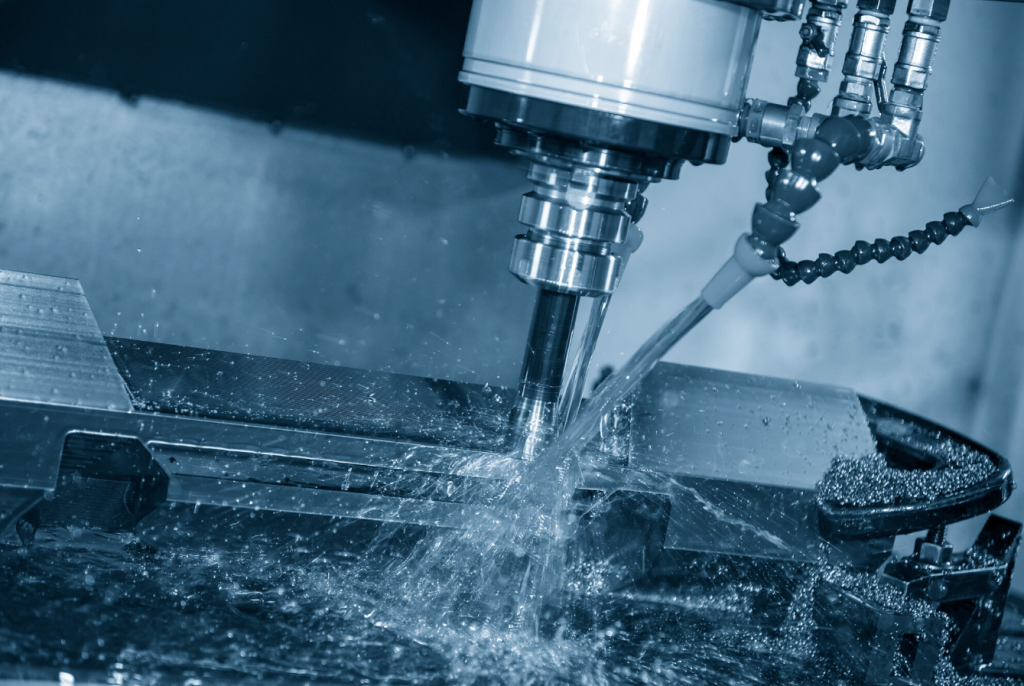As a beginner’s guide to CNC machining, it’s important to understand that CNC (Computer Numerical Control) machining encompasses several different types of machining processes, each suited for specific applications and materials. Here’s an overview of the main types of CNC machining:
- CNC Milling:
- Process: In CNC milling, a rotating cutting tool, often with multiple cutting edges, removes material from a workpiece. The workpiece is secured to a moving table, and the tool is guided by computer-controlled movements to create the desired shape.
- Applications: CNC milling is versatile and used for producing flat and contoured surfaces, slots, holes, and more. It’s common in industries such as aerospace, automotive, and manufacturing.
- CNC Turning:
- Process: CNC turning is used for creating cylindrical parts. A workpiece is rotated on a spindle, and a stationary cutting tool shapes the material by removing material incrementally.
- Applications: It’s widely used for producing shafts, pins, and other cylindrical components. The automotive and aerospace industries frequently utilize CNC turning.
- CNC Drilling:
- Process: CNC drilling involves creating holes in a workpiece. It can be used for creating holes of various sizes and depths with precision.
- Applications: CNC drilling is vital in industries like construction, aerospace, and electronics for creating precise holes in materials like metal, plastic, and wood.
- CNC Grinding:
- Process: CNC grinding uses an abrasive wheel to remove material from a workpiece. It’s employed for achieving very fine surface finishes and tight tolerances.
- Applications: CNC grinding is essential for producing high-precision components in industries like aerospace, medical, and tool manufacturing.
- CNC Electrical Discharge Machining (EDM):
- Process: EDM utilizes electrical discharges to erode material from a workpiece. It’s especially useful for machining hard or difficult-to-cut materials.
- Applications: EDM is used for creating intricate shapes in materials like hardened steel and titanium. It’s common in the mold and die industry.
- CNC Laser Cutting:
- Process: CNC laser cutting employs a high-energy laser beam to melt, vaporize, or blow away material from the workpiece. It’s ideal for cutting intricate shapes with minimal material waste.
- Applications: CNC laser cutting is widespread in industries such as metal fabrication, signage, and electronics for precise cutting of various materials, including metal, plastic, and wood.
- CNC Waterjet Cutting:
- Process: CNC waterjet cutting utilizes a high-pressure stream of water mixed with abrasive particles to cut through materials. It’s versatile and doesn’t generate heat, making it suitable for a wide range of materials.
- Applications: CNC waterjet cutting is used in industries like architecture, aerospace, and manufacturing for cutting materials like metal, stone, glass, and composites.
- CNC Plasma Cutting:
- Process: CNC plasma cutting employs a plasma torch to cut through electrically conductive materials, primarily metals. It uses a high-velocity jet of ionized gas to melt and remove material.
- Applications: CNC plasma cutting is prevalent in industries like metal fabrication and automotive for cutting thick metal plates and sheets.
These are the primary types of CNC machining processes, each with its own set of advantages and applications. As a beginner, it’s essential to familiarize yourself with these processes and their capabilities to determine which one is most suitable for your specific machining needs and projects.

